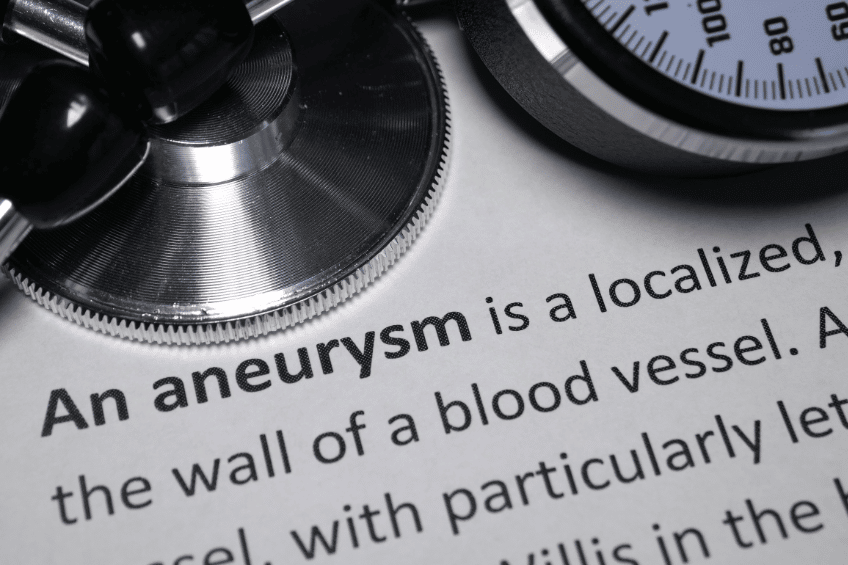Overview
An aneurysm is a bulge or ballooning in the wall of the artery that can involve different organs such as the heart, kidneys, or brain. Its rupture leads to bleeding, and can be fatally dangerous. Aneurysm rupture usually occurs suddenly and abruptly. However, there are warning signs that can often be detected and it is important not to ignore them.
What Is an Aneurysm?
An aneurysm is the result of a dilation of a vessel, forming a bump or bulge in its wall. When arteries dilate, they become thinner and more fragile. The more fragile the wall, the more the artery dilates. It’s a vicious circle that can become potentially highly dangerous.
The aneurysm can compress surrounding structures and leave serious consequences. The most dangerous aspect of it is its ability to rupture suddenly and cause extensive bleeding, which can be fatal.
An aneurysm can occur in any part of the body. A brain aneurysm is one of the most common cases.

Types of Aneurysms:
There are two main types of aneurysms, classified by their location in the body. The arteries of the brain and heart are the two most common sites of a serious aneurysm.
Cerebral aneurysms also called “the berry aneurysm”, this is the most common type. Usually located at the base of the brain, it can cause intracranial bleeding when ruptured.
Aortic aneurysms – the aorta is the largest artery that leaves the heart directly. This type includes a thoracic aortic aneurysm and an abdominal aortic aneurysm.
Other aneurysms:
Aneurysms can also occur in other vessels, such as those affecting the mesenteric artery (the artery that feeds the intestine) and in the splenic artery in the spleen, in the carotid artery, as well as in the arteries of the pelvis, knees or liver; however, these types are rarely prone to rupture.
Aneurysm Causes
The exact causes of aneurysms are still not well known. The weakness of the vascular tissue is the obvious direct cause, and there is a direct link with hereditary predisposition and congenital malformations.
However, there are risk factors that can increase the chances of developing an aneurysm (click next page):
